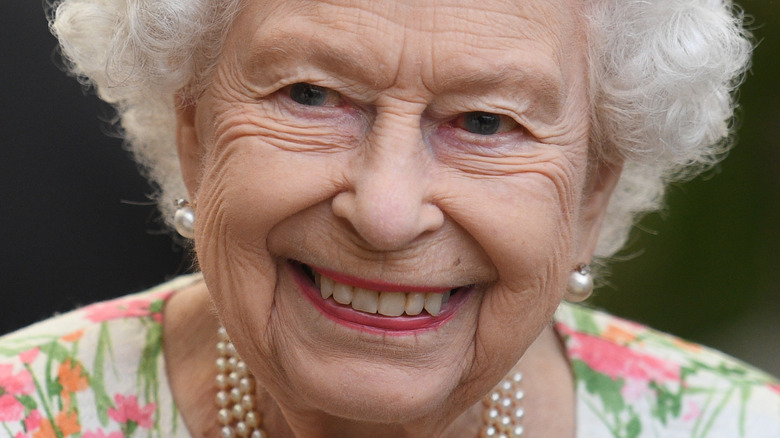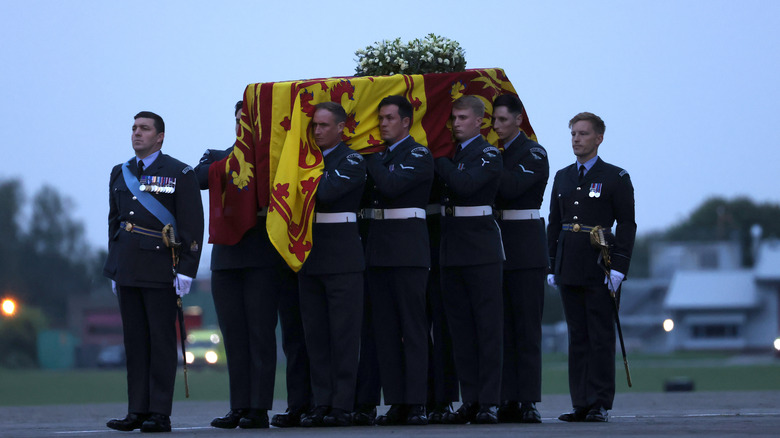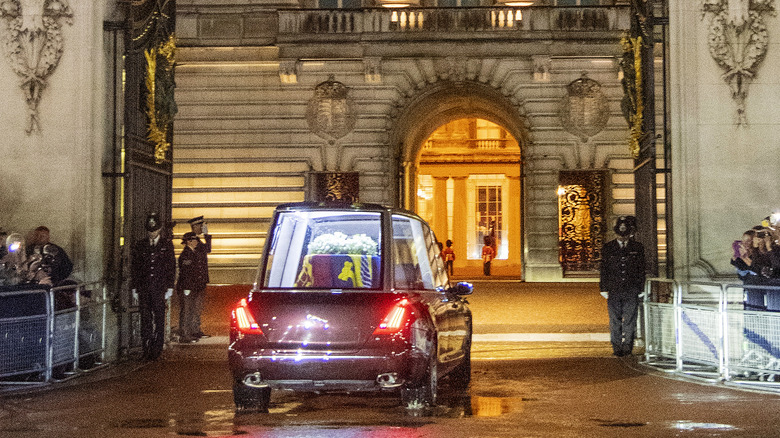Why Queen Elizabeth's Funeral Doesn't Have An Open Casket
After the heartbreaking death of Queen Elizabeth II, Operation London Bridge was put into action, which gives a thorough 10-day schedule for mourning the queen (via CNN). The plan for the queen's death and the days following it have been organized long before her passing. Now, funeral arrangements have been made.
Currently, the United Kingdom is observing a traditional mourning period for the queen, which will conclude at her funeral. She will have a state funeral, which will see processions in Edinburgh, London, and Windsor. The funeral will then take place at St. George's Chapel at Windsor Castle, her final resting place.
While the funeral will be closed to the public, mourners from the public can visit Queen Elizabeth's coffin during the lying-in-state period (via the BBC). It is tradition for this service to feature a closed casket, as the public can visit the Palace of Westminster and wait in the long line for their chance to pay their respects to the queen. This will take place until her funeral on Monday, September 19.
Queen Elizabeth's casket will also be closed during her funeral. According to Mental Floss, members of the royal family are buried in lead-lined coffins, which stay closed during the funeral to prevent decay. These special coffins can help preserve the body and slow down decomposition for over a year.
Queen Elizabeth's coffin was designed long before her death
Queen Elizabeth II's coffin has an interesting story behind it. According to the CBC, the beautiful oak coffin was constructed over 30 years ago. The reason why the queen chose to start thinking of her final resting place early was so that she and Prince Philip, her husband of over 70 years, could coordinate final resting places.
Their coffins will be placed together in the Royal Vault, a special final resting space that was created for King George III in the early 1800s and houses many members of the royal lineage (via Insider). Prince Philip's coffin was placed in a temporary spot in the vault but was recently moved to share the space next to his wife, who will be interred following her funeral on Monday, September 19.
The Royal Vault houses many members of the royal family, dating back to the early 1800s. Some of these famous royals include the queen's mother, Queen Victoria's father, the Duke of Kent, and Princess Margaret.
Her coffin will be in procession until her funeral
Queen Elizabeth II's coffin, which is kept closed to preserve the body from decay, is not the only elaborate part of her funeral arrangements. There are traditional and ceremonial procedures that must occur before her body can be laid to rest (via NBC News).
Queen Elizabeth's casket will be in a procession starting Tuesday, September 13. Her body is leaving St. Giles' Cathedral in Scotland. It then will be taken via airplane to London, where the next part of the ceremonial procedures will begin. Her coffin will arrive at Buckingham Palace before being moved on Wednesday to the Palace of Westminster where in the afternoon, will be carried by a gun carriage procession. Then, from Thursday to Monday, she will be laying-in-rest for the British public to pay their respects.
Not many details about the queen's funeral have been made public knowledge at this time, the CBC reports. The ceremony itself will span about an hour, but it is unclear if the queen made any special requests or arrangements. All of the royal family are expected to be there, and royal commentator Bonnie Brownlee has some speculations regarding what will unfold.
"I'm expecting a grandchild will say something, maybe a poem, something that will personalize it a little bit," she told the publication. "We could expect some surprises if they decide to switch it up a little bit, like maybe one or two things that are quite emotional in the service, but ... I think they'll leave a lot of that to only the family to know [in advance]."


